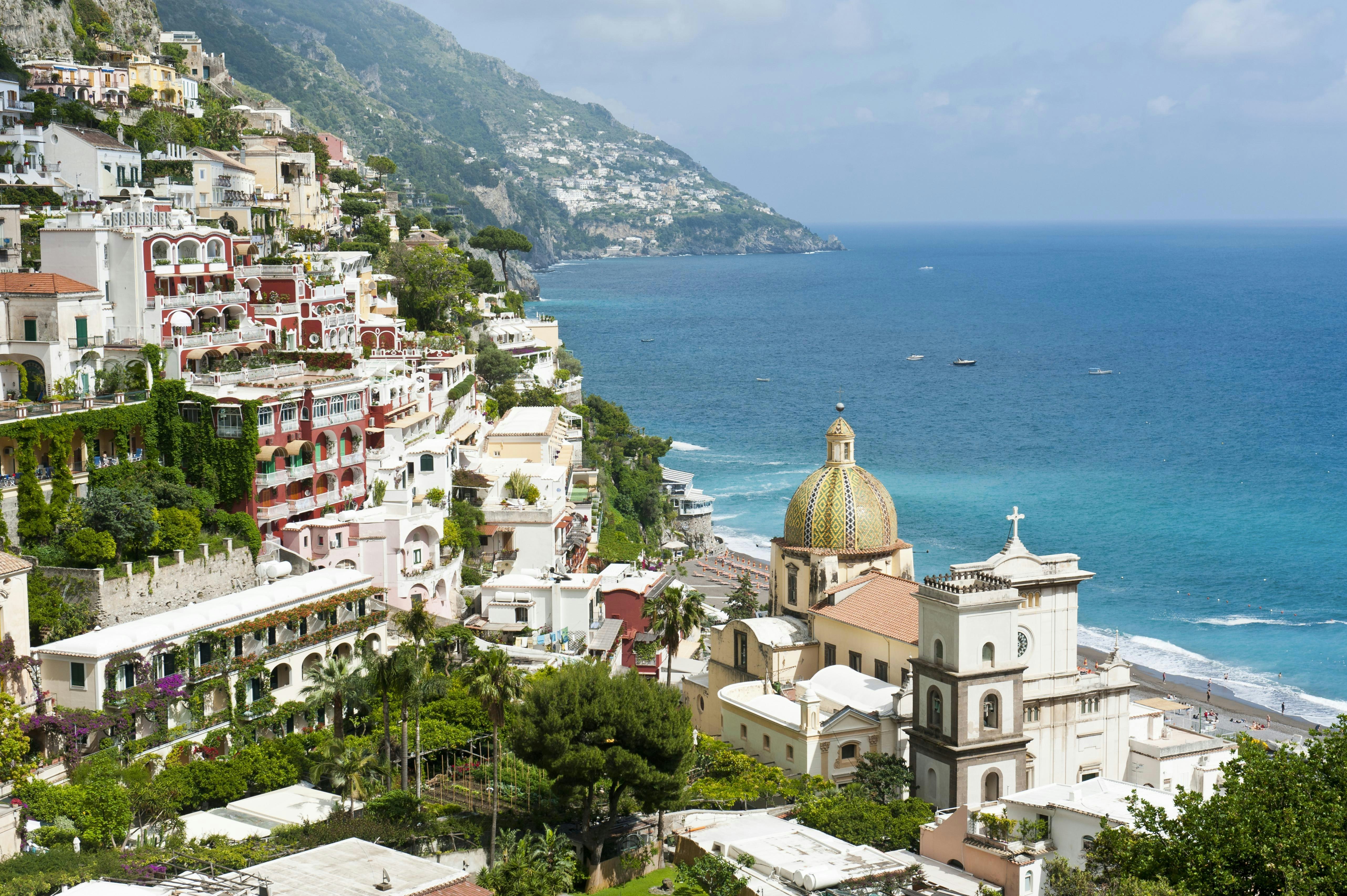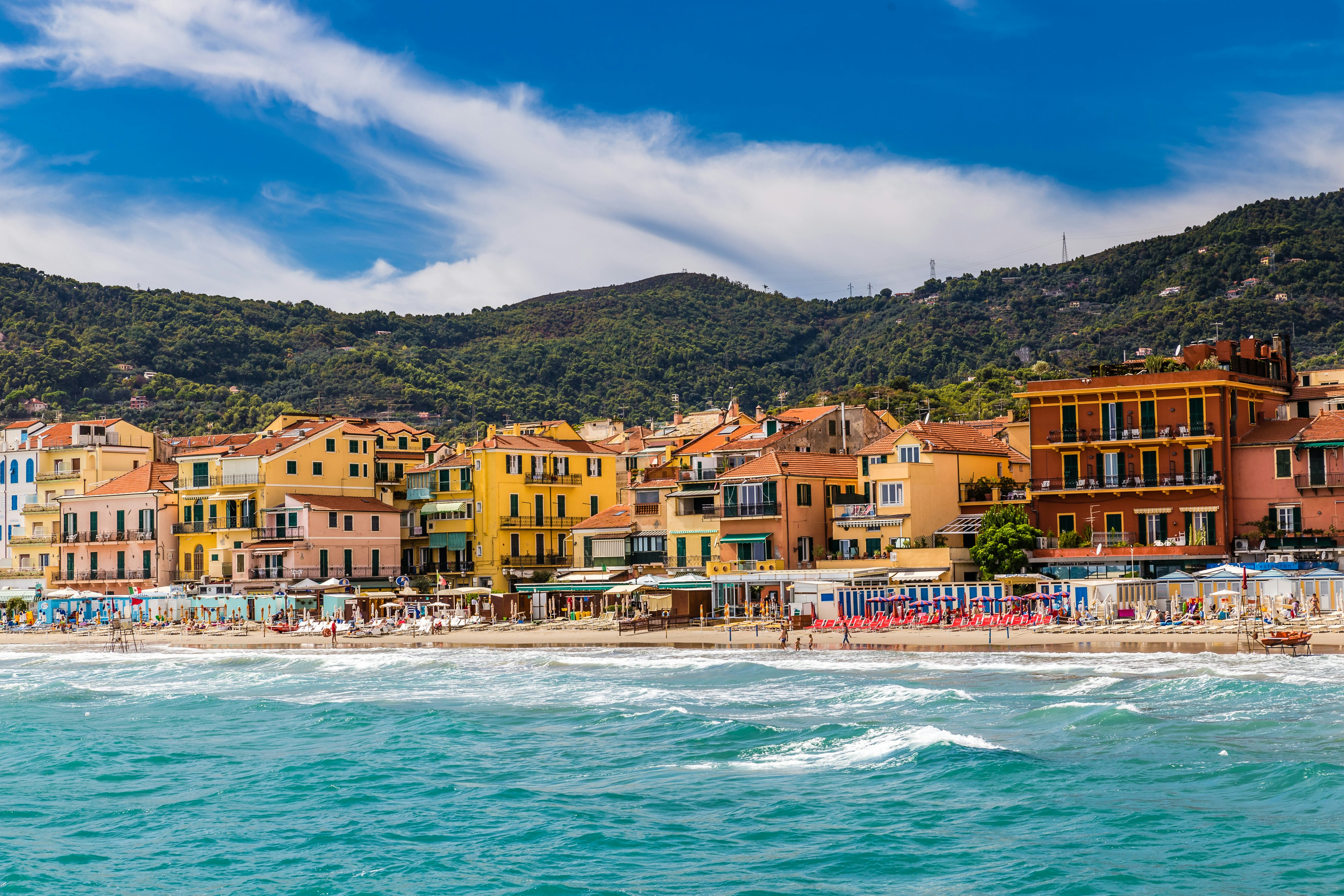
The 30 best countries, cities and regions to visit in 2025

Jul 20, 2022 • 5 min read

Italy's beaches are beautiful but some come with new regulations in 2022 © Getty Images
An increasing number of Italian beach destinations are bringing in new rules to mitigate the effects of overtourism and protect their shores from sand erosion and other damage. From identity bracelets to entry fees and even towel and swimwear bans, here's what you need to know about some of the latest regulations and where they apply.
12 top beaches in Italy for fans of sun, sand and glam
The town of Sorrento is spectacularly beautiful but spectacularly crowded in the high season (Easter to October) when visitors head there for sunshine, balmy weather, and easy access to the Amalfi Coast, Capri, and Naples. At the height of summer, when visitor numbers reach their peak, it's common to see tourists hanging out in swimwear, miles from the beach or lido. But it's an image the mayor of Sorrento, Massimo Coppola, isn't happy with. Last week, Coppola said those walking around bare-chested or wearing swimwear—including bikinis, swimsuits, and swimming trunks—outside of Sorrento's beaches or pools could face fines of up to €500 ( $505 / £425). Seemingly, some locals don't approve of visitors treating the town like one giant beach, according to Coppola. He said that the sight of people walking the streets in beach attire upsets them and ruins the image of the town, telling The Times it causes "discomfort" and "unease."
Day-trippers to Venice must soon pre-book and pay to enter
Posting on his Facebook page, Coppola said "in a town where the quality of hospitality is internationally recognized, respect for places and urban decor becomes necessary". The 'anti-bikini' ordinance as it's known is now in effect.
Similar rules are in place in the town of Rapallo on the Italian Riviera and in the Calabrian town of Praia a Mare where in addition to swimwear-on-the-street bans, people are also prohibited from walking around barefoot. The seaside destination of Cinque Terre is also strict on footwear, imposing fines of up to €2,500 on people for wearing flip-flops or sandals when hiking its famous coastal paths.

Spiaggia della Pelosa in Sardinia attracts thousands of beachgoers each day. It's one of those picture-perfect beaches that's regularly voted one of the best in Italy with its crescent of powder-soft sand and shallow, crystal clear waters. But due to human interference, the beach is losing sand at an unsustainable rate. Authorities are now trying to limit its popularity by capping visitor access to 1,500 people daily. According to Euronews, it's also banning towels to protect its sand (which often gets caught up in beach towels when packed away) so visitors now have to pay to rent a sun lounger instead. They also have to pay an entry fee of €3.50 and wear yellow identification bracelets while on the beach.
Sardinia's top 10 beaches: what spot is perfect for you
Other popular Sardinian beaches that have recently introduced visitor caps include Lu Impostu (1,500 people per day) and Brandinchi (3,330 beaches goers per day) in the popular summer resort of San Teodoro.

The Amalfi Coast calls to mind pictures of picturesque beaches, dramatic cliffs, sunshine, lemons, spritzes, and... traffic jams. Every summer during peak season the coast roads are backed up and the air thick with exhaust fumes from Vespas, BMWs, and Fiat Cinquecentos as people in their droves take road trips to the Amalfi seaside resorts. Not only do those road jams wreck the scenery, they also end up doubling and sometimes tripling journey times. This summer, authorities decided to take action to ease congestion and have introduced a summertime limit on driving along the route connecting Positano to Vietri sul Mare.
Italy’s fabulous five: planning your visit to the Cinque Terre
The summertime limit allows cars with number plates that end in odd numbers to access the road on odd number days of the month, for example the 3rd, 11th, 25th etc. While cars with even number plates can access it on even number days. The rule is enforced from 10am to 6pm on weekends through to the end of September 2022. Taxis and public buses don't have to follow the rule.

Italy has miles and miles of pristine coastline and some of the best beaches in Europe. But access to the sea is a contentious issue here as more and more stretches of sand continue to be snapped up by beach resorts and clubs and turned into private spaces where you generally have to pay to enter and to use sun loungers, umbrellas, and other facilities.
More than half of Italy's coastline has been given over to these private concessions despite being public land, according to the environmental association Legambiente, with the number of private beach establishments doubling in the past two decades alone. Some are eye-wateringly expensive such as Alassio in the Italian Riviera where you can be charged up to €380 per day for a sun lounger in August.
"Finding a free place to sunbathe freely and freely is increasingly difficult. In fact, bathing concessions are increasing, [they] currently affect more than 50% of Italian beaches," Legambiente stated in a report, while the Italian Ministry of Health says that 8% of Italian beaches cannot be used due to pollution, particularly in Sicily, Calabria, and Campania. "The result is that the free and bathing beaches in our country is reduced on average to 40%, but with great differences between the regions," Legambiente said.
The best things to do in Sardinia: an insider's guide
There are public beaches (spiaggia pubblica) where entry is free but some are now charging small cover fees to protect their dunes and vegetation from visitors, particularly in Sardinia where beaches tend to become overcrowded in summer. The idea is that the funds raised from the fees can be put towards the maintenance of the beaches. La Pelosa, as we said, charges a €3.50 entry fee to anyone over the age of 12, and to visit Cala Mariolu, it costs €1 per person with a 550 visitor cap per day.
Cala Coticcio and Cala Brigantina in La Maddalena national park in Sardinia now require visitors to book entry slots and charge €3 per person to access the beaches. Many other beaches also charge small fees so tourists should check ahead before visiting beaches in Italy and ensure they have euro coins in their beach bags... just in case.
Plan with a local
